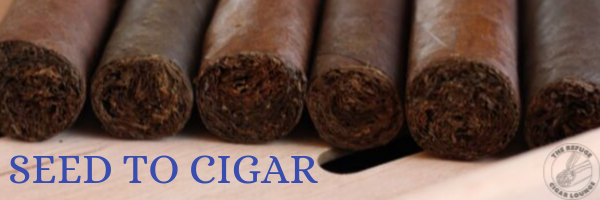Once our tobacco leaves have dried in the curing barns, they are shipped off to the packing houses. The leaves are once again sorted, this time by size, texture, and color. Once sorted the leaves are once again tied together with a strip of palm tree leaf. They are tied in 20-leaf bundles called “hands” and they will begin a fermentation process called “sweating”.
The hands are now stacked in free-standing square piles called “burros”. These burros can weigh up to 10,000 pounds and stand up to 6 feet high. Air is trapped inside the burro since it cannot circulate and this causes a natural heat buildup. This heat causes the release of moisture, plant saps, and ammonia nitrate from the leaves and causes physical changes to the makeup and characteristics of the tobacco. The leaves will darken and starches turn into sugar, which causes a natural sweetness to some cigars upon lighting.
It is extremely important the burros be made up of exactly the same grades and textures of leaves or they will not cure at the same rate and the whole stack can be a loss. During the fermentation process a long thermometer is placed into the burro at certain intervals to make sure the temperature does not rise about 160°F (although, Maduro is placed at a higher temperature, but we’ll discuss that in another post). The higher the temperature, the darker the tobaccos will be and the more strain is placed on the leaves. There are different temperature ranges for filler, binder, and wrapper leaves. When the leaves reach the desired temperature they are “turned”, which means placing the top leaves on bottom (or essentially starting a new burro). Each hand is removed, shaken vigorously to dissipate the heat, and then restacked into the new burro. Each time a burro is turned, it will take longer for the heat to buildup. Each burro can go through 6-10 turns and can take anywhere from 20-60 days to complete the fermentation process.
Our tobacco leaves have had quite the journey so far! Next week we move on to sorting and inspecting the leaves.

